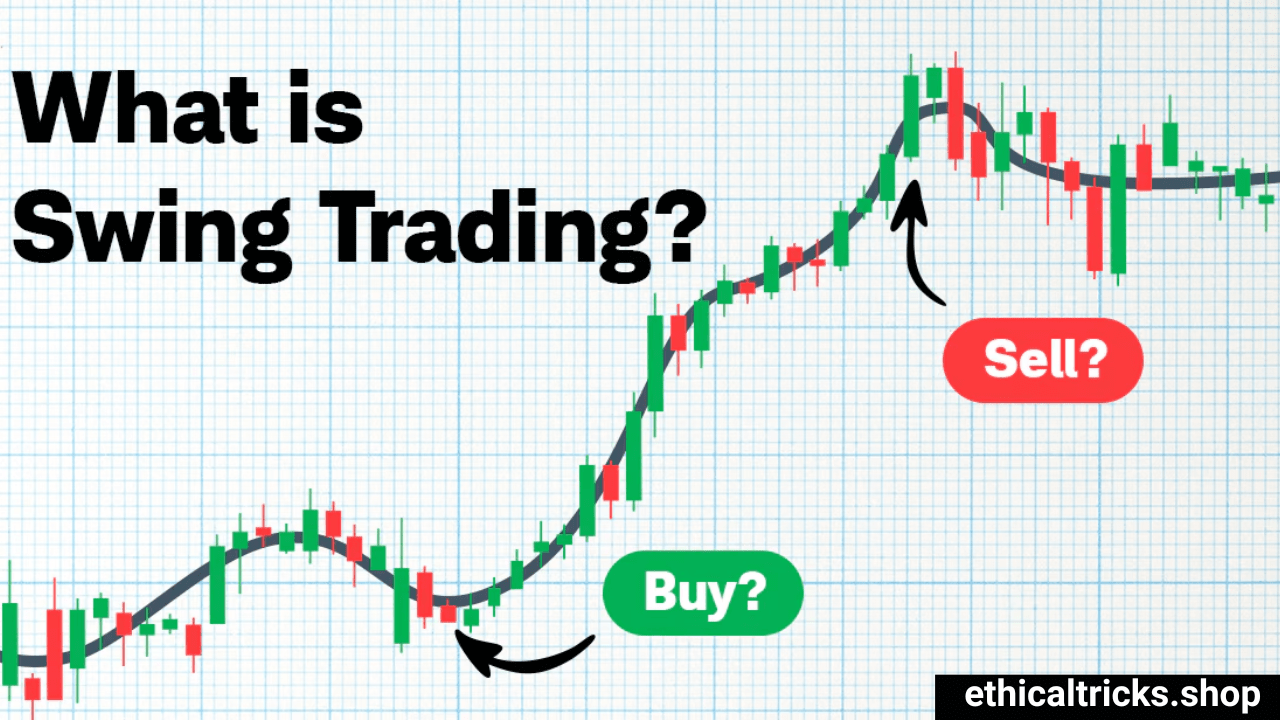Introduction
Swing trading is one of the most popular trading strategies used by investors to profit from short to medium-term price movements in the stock market. Unlike day trading, which focuses on intraday price changes, swing traders aim to capture gains over days or weeks. To succeed in swing trading, having a solid strategy is crucial. In this article, we’ll discuss the best strategy for swing trading, offering tips on risk management, trade execution, and common mistakes to avoid.
Basics of Swing Trading
Before diving into the best strategy for swing trading, let’s review what swing trading is. Swing trading involves buying stocks or assets at a lower price and holding them until they reach a higher value. The goal is to take advantage of short-term price swings. Traders typically use technical analysis to identify potential entry and exit points, based on chart patterns, trends, and indicators like moving averages, Relative Strength Index (RSI), or MACD.
Swing traders typically hold positions for a few days to several weeks. This time frame allows them to profit from both upward and downward market fluctuations. Unlike long-term investors, swing traders focus on price movements rather than the underlying fundamentals of the asset.
The Importance of Risk Management
No strategy, no matter how solid, is foolproof. That’s why risk management is an essential component of any swing trading plan. One of the best strategies for swing trading includes knowing how much capital you’re willing to risk on each trade.
A general rule of thumb is to risk no more than 1-2% of your total trading account per trade. This helps you limit losses and preserve capital for future trades. You can implement this by setting stop-loss orders at a predetermined level to automatically exit a trade if the price moves against you.
Furthermore, it’s crucial to adjust your position size according to the volatility of the stock. More volatile stocks might require smaller positions to reduce the impact of sudden price swings, while less volatile stocks may allow for slightly larger positions.
Key Components of the Best Strategy for Swing Trading
To develop the best strategy for swing trading, it’s important to understand the critical components that will guide your decision-making. These elements include technical analysis, chart patterns, and market indicators.
1. Identifying Trends with Technical Analysis
The foundation of swing trading lies in technical analysis. Swing traders primarily use charts and indicators to identify trends. The idea is to enter trades during the early phase of an uptrend or downtrend, capitalizing on price movements before they hit their peak or trough.
Tools like moving averages can help smooth out price fluctuations and identify the direction of the trend. For instance, a 50-day moving average crossing above a 200-day moving average (the “Golden Cross”) signals a potential buy opportunity.
2. Recognizing Chart Patterns
Chart patterns, such as head and shoulders, triangles, and flags, are powerful tools for predicting price movements. By recognizing these patterns, traders can make more informed decisions on when to enter and exit a trade.
For example, a double top or double bottom pattern could signal a reversal, while an ascending triangle may indicate a breakout to the upside. Knowing how to spot these formations can make the difference between a winning and losing trade.
3. Using Market Indicators
Swing traders also rely on technical indicators to help time their entries and exits. Popular indicators include the RSI, which measures whether a stock is overbought or oversold, and the MACD, which shows momentum changes.
An RSI reading above 70 typically indicates that the asset is overbought and may soon see a price correction. Conversely, an RSI below 30 indicates the asset might be oversold, presenting a potential buying opportunity. Similarly, MACD crossovers are commonly used to signal buy or sell opportunities.
How to Develop a Swing Trading Strategy
To create the best strategy for swing trading, follow these steps:
1. Select Your Trading Tools
Start by deciding which charting tools and technical indicators you’ll use. Many traders prefer platforms like TradingView or MetaTrader, which offer robust charting capabilities and real-time data. Customize your charts to display key indicators like moving averages, RSI, and volume.
2. Define Your Entry and Exit Criteria
Next, set clear entry and exit rules. An effective strategy will outline when to buy, how to set stop-loss levels, and when to sell. For example, you might decide to enter a trade when the price breaks above a certain resistance level and sell when it hits a predefined price target or when the RSI indicates an overbought condition.
3. Backtest Your Strategy
Before applying your strategy in real-time, backtest it on historical data. This allows you to see how your strategy would have performed in the past and refine your approach if needed. It also helps you understand how different market conditions can affect your trades.
4. Stay Consistent
Consistency is key to success in swing trading. Stick to your strategy, avoid making impulsive decisions based on emotions, and always use stop-loss orders to protect your capital.
Common Mistakes to Avoid
Even with the best strategy for swing trading, mistakes can still happen. Here are some common pitfalls to watch out for:
1. Overtrading
Many new traders think that trading more frequently will increase their chances of success. However, overtrading can lead to excessive transaction costs and emotional fatigue. Stick to your strategy and only trade when you see clear opportunities.
2. Ignoring Risk Management
Failing to set stop-loss orders or risking too much on a single trade is a fast track to losing capital. Always prioritize risk management to preserve your trading account for the long term.
3. Letting Emotions Drive Decisions
Emotional trading, such as panic selling during a market dip or greed-fueled buying, can cloud your judgment and lead to poor decision-making. Maintaining discipline and sticking to your strategy will help keep emotions in check.
Importance of Discipline and Consistency
One of the most crucial elements in swing trading is discipline. The best strategy for swing trading isn’t just about using the right tools; it’s about following a structured plan and remaining consistent in your approach. Successful traders avoid chasing after every potential trade and instead focus on executing their strategy with precision.
Discipline also means accepting losses without allowing them to impact your next trade. It’s inevitable that not every trade will be a winner, but learning from your mistakes and staying consistent will help you build long-term success.
Conclusion
Swing trading can be a highly rewarding strategy for investors who are disciplined and have a solid approach. The best strategy for swing trading includes a combination of technical analysis, risk management, and disciplined execution. By using tools like moving averages, RSI, and MACD, and applying sound risk management principles, you can increase your chances of success in the market.
Remember, consistency and patience are key. Avoid overtrading, stay disciplined, and always use stop-loss orders to minimize your risks. By applying these tips and strategies, you’ll be well on your way to becoming a successful swing trader.

